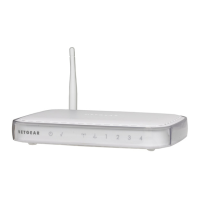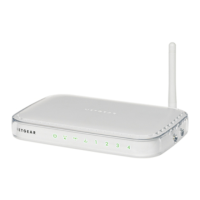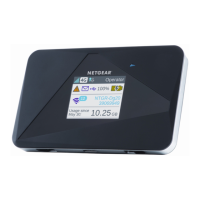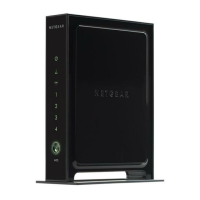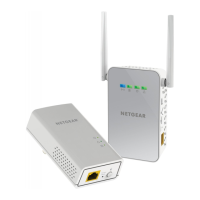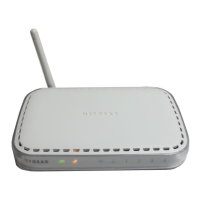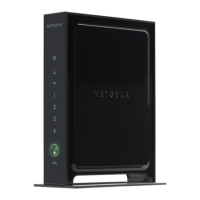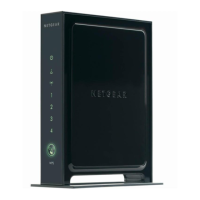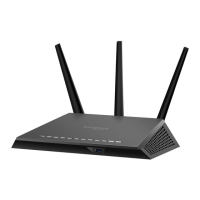
Do you have a question about the NETGEAR 108 MBPS WIRELESS WGT624 V3 and is the answer not in the manual?
| Brand | NETGEAR |
|---|---|
| Model | WGT624 V3 |
| Wireless Standard | 802.11g |
| Max Wireless Speed | 108 Mbps |
| Frequency Band | 2.4 GHz |
| LAN Ports | 4 |
| WAN Port | 1 |
| Firewall | Yes |
| VPN Support | No |
| Security | WEP, WPA, WPA2 |
| Antennas | External |
Describes the manual's target audience, scope, and formatting conventions used.
Explains navigation and features of the manual's HTML version for effective use.
Provides instructions for printing pages, chapters, or the full manual.
Highlights the main capabilities and benefits of the WGT624 v3 router.
Details the wireless networking capabilities, speeds, and modes supported.
Describes the router's firewall features and content filtering options for network security.
Explains the user-friendly setup wizard and auto-update features for simplified use.
Illustrates and describes the LEDs and physical ports on the router's front and rear panels.
Guides through the initial setup process using the Smart Wizard Installation Assistant.
Explains how to access and log into the router's web-based management interface.
Details how to configure the router's internet connection parameters for ISP access.
Covers setting up the wireless network, including SSID, region, channel, and security options.
Explains how to block specific websites, domains, or internet services based on keywords or ports.
Describes how to set up schedules for when content blocking rules will be enforced.
Details configuration for receiving email alerts and logs for network activity and security events.
Explains how to access and interpret logs of web access and attempted access.
Shows how to check the router's system status, including WAN, LAN, and Wireless port details.
Provides instructions on how to update the router's firmware to the latest version.
Explains how to back up, restore, and erase the router's configuration settings.
Guides on how to change the router's default administrator password for enhanced security.
Configures the router to make local servers accessible from the Internet.
Explains the dynamic port opening feature for gaming and other applications.
Covers settings like DMZ server, MTU size, and ping response for WAN port.
Details how to use a dynamic DNS service to access the network with a changing IP address.
Covers configuring the router's LAN IP address and using it as a DHCP server.
Explains how to manually define static routes for specific network scenarios.
Configures the router for remote access and management over the Internet.
Describes how to enable UPnP for automatic device configuration and service discovery.
Describes the expected startup sequence and troubleshooting for LED indicators.
Covers common problems with accessing the web interface and the ISP connection.
Explains how to use ping utility and verify network configuration for troubleshooting.
Provides methods to restore the router to factory default configuration and password.
Explains IP address classes, netmasks, and subnet addressing concepts.
Details Network Address Translation and the use of private IP address ranges.
Explains MAC addresses and the Address Resolution Protocol.
Describes the role of DNS servers in translating names to IP addresses.
Explains firewall functionality, stateful packet inspection, and security threats.
Details UTP Ethernet cable quality and types for network connectivity.
Outlines requirements for preparing computers to use TCP/IP networking.
Provides detailed steps for configuring TCP/IP settings in various Windows versions.
Explains TCP/IP configuration for Macintosh computers using DHCP.
Guides on how to collect ISP configuration information for firewall setup.
Explains the need to restart the network after configuration for devices to communicate.
Introduces wireless LAN standards (802.11b/g) and modes (infrastructure, ad hoc).
Explains wireless authentication methods and WEP data encryption.
Details WPA/WPA2 security features, comparison to WEP, and benefits.
Discusses the radio frequency channels used by 802.11b/g networks and potential interference.
Defines the IEEE standard for wireless local area networks (WLANs).
Describes a system that secures a network and prevents unauthorized access.
Explains the capability to share a single IP address among multiple computers.
Describes basic wireless security provided by Wi-Fi for data encryption.
Details WPA as a security technology for wireless networks, improving on WEP.
Explains the underlying technology for Internet and network communications between computers.
